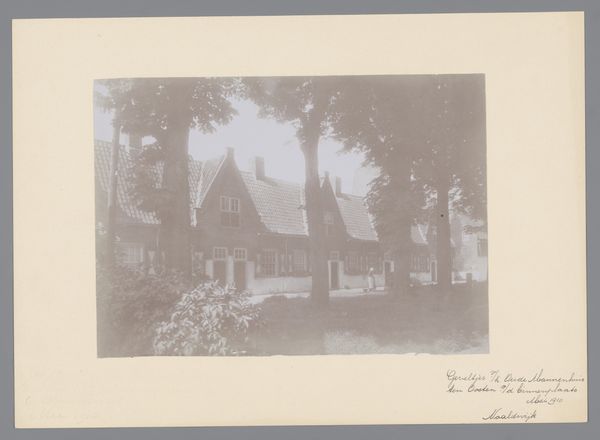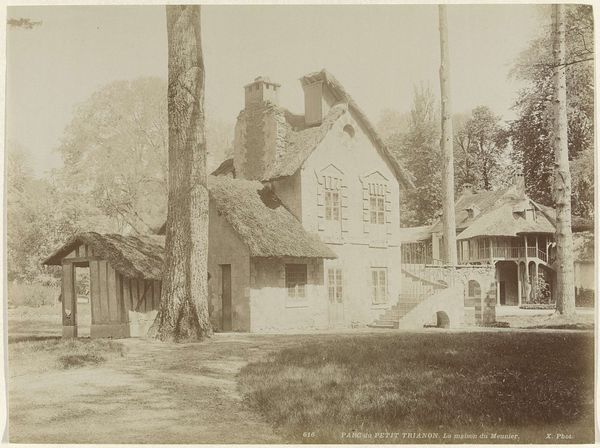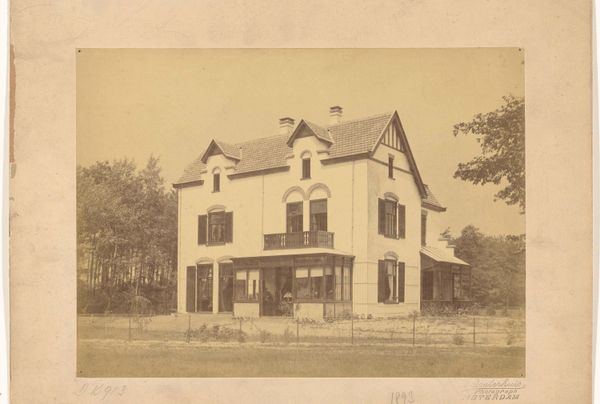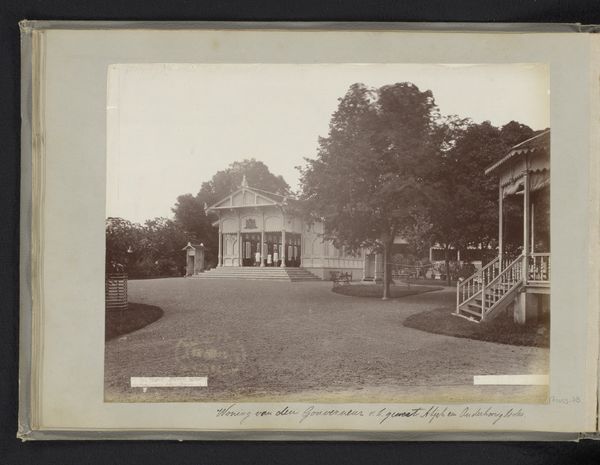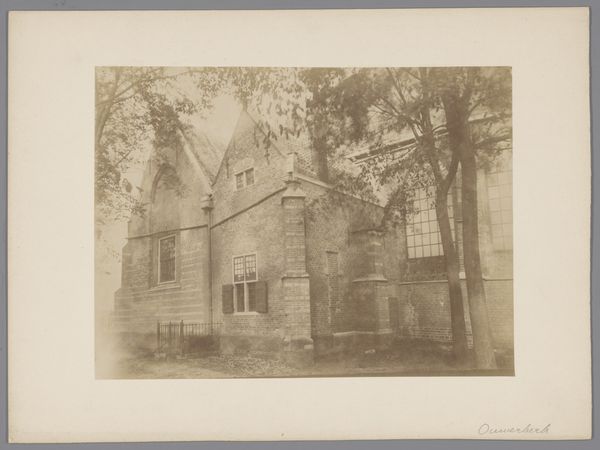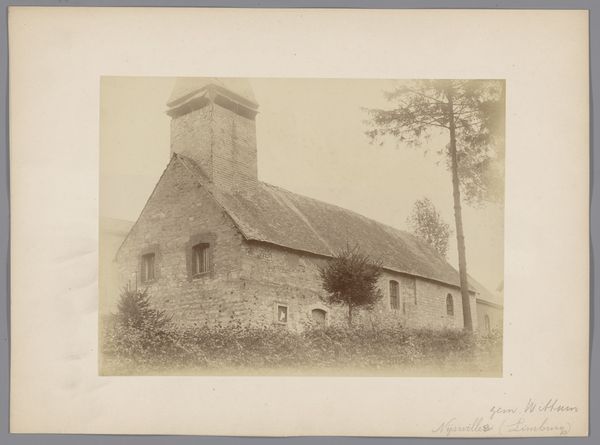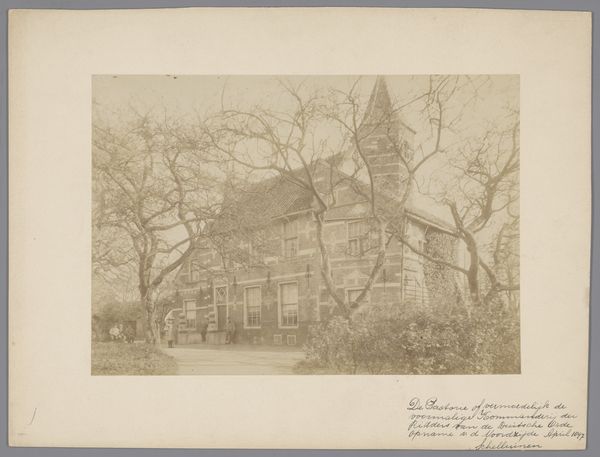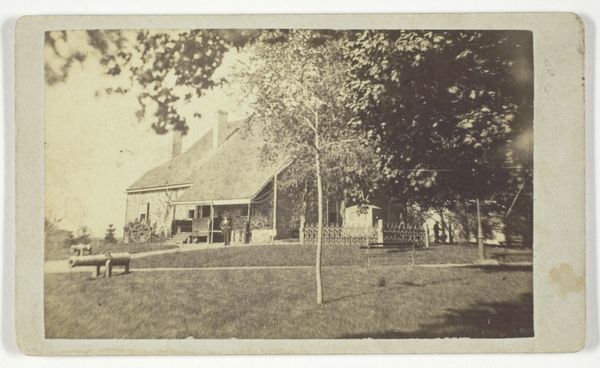
Restaurant in Russische stijl op de Wereldtentoonstelling van 1873 te Wenen c. 1873 - 1875
0:00
0:00
print, photography, albumen-print
#
tree
# print
#
landscape
#
photography
#
albumen-print
#
realism
#
building
Dimensions: height 197 mm, width 257 mm
Copyright: Rijks Museum: Open Domain
Curator: This albumen print, titled "Restaurant in Russische stijl op de Wereldtentoonstelling van 1873 te Wenen," was captured by Oscar Krämer sometime between 1873 and 1875. What's your first take on this? Editor: I'm immediately struck by its somewhat theatrical quality. There's a picturesque charm but also something intentionally constructed, like a stage set. Curator: That's interesting. Let’s look at the materiality. It’s an albumen print, which involved coating paper with egg white before the photographic chemicals, producing incredibly detailed and glossy images. The process itself reflects a merging of artistic skill and technical know-how of the era. And of course the photograph immortalizes an element, architecture, made from labor and material. Editor: Absolutely. The building itself becomes a subject but within the broader context of the World's Fair. The very act of constructing a “Russian-style” restaurant in Vienna is rife with cultural and political implications. It represents the appropriation and presentation of identity for the consumption of a diverse audience, wouldn't you agree? Curator: Precisely. Consider the labor involved. Someone designed and built this structure using particular materials in the height of the 19th century to evoke the sensation of "Russia" in a controlled setting for global consumption, if only momentarily. That act is as telling as the photograph of it. Editor: And for whom was this constructed? Was it truly representative of Russian identity, or more of a Western construct? World’s Fairs were very political events, and constructions like this are loaded with the politics of representation. How were actual Russian workers involved in the design or building? The power dynamics are embedded in the architectural elements themselves, even down to the wood grain. Curator: Right. Even the way the trees are placed almost feels curated to produce an intentional naturalized backdrop for an otherwise very manufactured building. It calls into question what is meant by "real." Editor: The question is, what remains now, looking at it now, decades after the building vanished and the World Fair folded? What does the residue mean now? Curator: This conversation reframes my relationship to the image. It reveals the deeper networks of influence in this photograph of a long-gone moment, bringing both process and social context into focus. Editor: It shows how photographs, as documents, aren't neutral but deeply implicated in larger power structures of identity, labor, and the act of observing "the other" through architecture, or photography, itself.
Comments
No comments
Be the first to comment and join the conversation on the ultimate creative platform.

